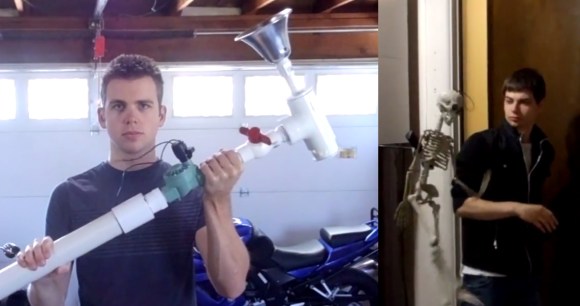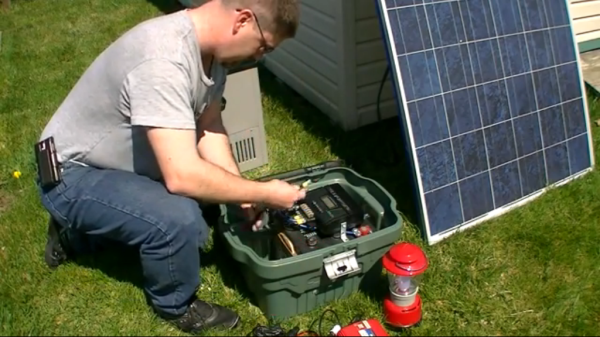[Rick] does a lot of camping, but he loves his electronics. So he’s now on his third iteration of his solar-powered battery box, and it packs quite the punch!
It’s a pretty simple build, but very effective. [Rick] is using a 200W solar panel, a 20 Amp MPPT solar charge controller, a large 100Ah Military Spec Deka 6TMF deep cycle battery, three 12 volt car accessory outlets, and to box it all up — an inexpensive plastic tote from Walmart to keep it dry in bad weather. The only problem we can see with this is that since the battery isn’t a sealed gel cell, it could out gas inside the tote which might cause him problems down the road. He’s aware of this though so the lid is only on when it needs to be.
This unit can power pretty much anything that runs on 12 volts, from USB devices, to camping light batteries, air pumps for air mattresses, C-PAP machines via the included A/C inverter, and it can even run an EdgeStar FP-430 portable fridge/freezer for 3+ days before even needing to plug in the solar panel for recharging! Total system cost is a bit high at around $1000 — but that includes the portable fridge, solar panels, and all accessories and miscellaneous hardware that went into assembling the system.
Stick around after the break to see the video demonstration.
Continue reading “Solar Camping On Steroids” →

















